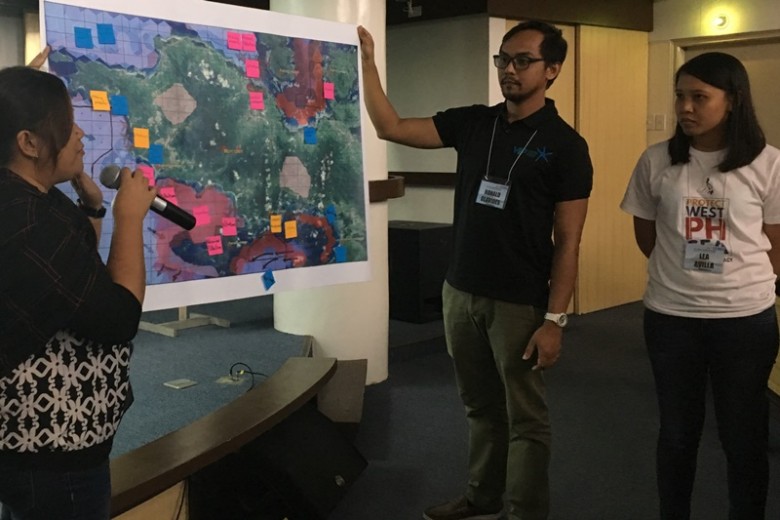
Trainees during the CCRES Marine Reserve Design Training Workshop at the Marine Science Institute, University of the Philippines.
Marine reserve design training in Manila
September 20 2017
“Sometimes you have to put [the marine reserve] where it hurts,” CCRES postdoc Dr Nils Krueck, University of Queensland, told his trainees during the CCRES Marine Reserve Design Training Workshop at the Marine Science Institute, University of the Philippines, in Quezon City, Metro Manila on 26-30 June 2017.
The main objectives of the training were for participants to learn how to use marine reserves as fisheries management tools; and to apply advanced marine reserve design tools to support both conservation and fisheries productivity.
Nils and fellow trainers Dr Vera Horigue, Marine Science Institute, University of the Philippines, and Ms Madeleine Davey, University of Queensland, used lectures and interactive exercises to demonstrate how marine reserve design principles may be put into practice.
Nils focused on three key questions when designing marine reserves: 1) how much to protect; 2) what size reserves should be; and 3) where reserves should be placed.
Using examples from his own research, Nils discussed how increasing a 10% target coverage to at least 30% would yield significant fisheries benefits. Another key message repeated throughout the course was to prioritise local retention, that is, the coral reefs you decide to protect should be their own source for larvae. And sometimes this means having to place marine reserves in important fishing grounds – “where it hurts”. The marine reserve design tools, which apply these principles, were introduced during the sessions.
Vera and programmer Mr Chester Balingit also facilitated an exercise on Fish SPACE, a spatially-explicit model that visualizes potential benefits of different marine reserve network configurations.
Trainees were from the CCRES’s partner organisations and projects, particularly the Palawan Council for Sustainable Development, Department of Environment and Natural Resources - Biodiversity Management Bureau, the SMARTSeas Project (with their partners the Haribon Foundation, Lanuza Bay Development Alliance, and Conservation International Philippines), and the Marine Science Institute, University of the Philippines Diliman.
They found the tools relevant to their work because many of them are involved in establishing marine reserves and marine reserve networks in areas around the Philippines. They mentioned that the tools can provide new information to enhance an ongoing planning process, and to better communicate with local leaders and stakeholders.



